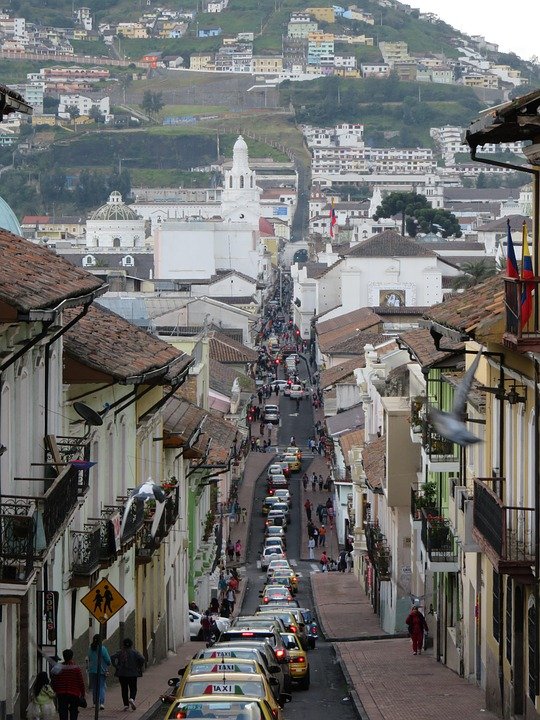Wondering when to go to Quito without running into huge crowds or bad weather? Planning your trip to this stunning capital of Ecuador can feel a bit daunting, especially when you consider the weather, budget, local events, and the types of activities you want to partake in. Fortunately, I'm here to help you navigate the best times to visit Quito based on all these factors!
Overview of Quito's Climate
First off, let's chat about the weather in Quito. Nestled in the Andes Mountains at an altitude of about 2,850 meters (8,858 feet), Quito enjoys a unique climate that's influenced by its elevation. Unlike most tropical regions, it doesn't have a conventional summer or winter season. Instead, you can expect two main seasons: the dry season (June to September) and the wet season (October to May).
In terms of temperature in Quito, you'll find it remains relatively stable year-round. Daytime temperatures generally hover around 15°C to 20°C (59°F to 68°F) but can feel warmer due to the thin atmosphere. Evenings can get a little chilly, dropping to around 9°C (48°F), so it's wise to pack layers. So, if you're asking when to travel to Quito, knowing the weather is definitely a good place to start!
Month-by-Month or Seasonal Breakdown
January to March:
Weather: This period is part of the wet season, with rain likely almost every day. Expect overcast skies and cooler nights.
Events: There are some cool festivals like the Festival de la Luz (Festival of Light) in February.
Pros & Cons: You'll see fewer tourists, but the rain can be a bummer for outdoor plans. On the plus side, this is a lush time for photography!
Who It's Best For: Great for budget travelers who want to snag cheaper hotel deals.
April to May:
Weather: April typically brings a significant amount of rain, which tapers off into May.
Events: Local festivities often pop up around Easter, which can be an interesting cultural experience.
Pros & Cons: Although you might face showers, the landscapes are vibrant. It's a beautiful time for plant lovers!
Who It's Best For: Ideal for outdoor explorers who love to see nature in bloom.
June to August:
Weather: Welcome to the dry season! Brilliant sunny days are common.
Events: This is a peak time for local festivals, especially Inti Raymi (the Festival of the Sun) in June, celebrating indigenous culture.
Pros & Cons: Busy season for tourists means you'll need to book in advance. Prices go up slightly, but the clear skies and lively atmosphere are worth it.
Who It's Best For: Perfect for those looking to hike or experience Quito's outdoor offerings.
September to November:
Weather: The rain starts to return, but there can still be beautiful sunny days.
Events: The Quito Festival of Arts usually happens in September.
Pros & Cons: You can find some good deals post-summer, but be prepared for unpredictable weather.
Who It's Best For: Great for cultural enthusiasts who want to explore art and performances.
December:
Weather: December is another month with potential rain, but it's still pleasantly warm.
Events: Look out for the holiday festivities, including Christmas markets.
Pros & Cons: The festive atmosphere is wonderful, but it can get crowded during holidays.
Who It's Best For: Wonderful for families or friends traveling together looking for holiday cheer.
Tips Based on Travel Style
For Budget Travelers:
If you're trying to keep costs low, aim for January to March. Hotel prices drop significantly during the rainy season, and you can take advantage of fewer tourists.
For Avoiding Crowds:
Consider traveling in late September to early October. The weather can still be decent, and you'll experience the charm of Quito without the throngs of tourists.
For Outdoor Activities:
Summer, especially June through August, is by far the best time for outdoor adventures. With clear skies, you can enjoy day hikes and explore the stunning landscapes surrounding the city.
For Cultural Events:
If you're keen on experiencing local culture, plan your visit for June during the Inti Raymi festival or September for the Arts Festival. Both events show Quito's rich traditions beautifully.
For Romantic or Solo Trips:
February can be a lovely month to savor quieter moments. The rain keeps the tourist numbers down, allowing for peaceful exploration, and the aesthetics of a rainy Quito have a charm of their own.
It really depends on what kind of experience you're looking for in Quito. Some travelers love January because of the quiet vibe, while others aim for the festivals that light up June. Your goals and interests will really help dictate the perfect timing for your visit!
FAQs
Is January a good time to visit Quito?
Yes, if you don't mind the rain and want to enjoy fewer crowds, January can be a good option. Just remember to pack an umbrella!
When is the rainy season in Quito?
The rainy season typically runs from October to May, with the wettest months being April and May.
What’s the cheapest time to visit Quito?
Generally, January to March offers the lowest prices on accommodation and flights due to the rain.
What’s the peak season in Quito?
June through August marks the peak tourist season, especially around festivals and beautiful weather.
Whether you're visiting during vibrant festivals or quiet rainy months, Quito offers unique experiences year-round. Your personal preferences will guide you to the best time for your adventure, ensuring that your trip to this Andean gem is unforgettable. 🌟








